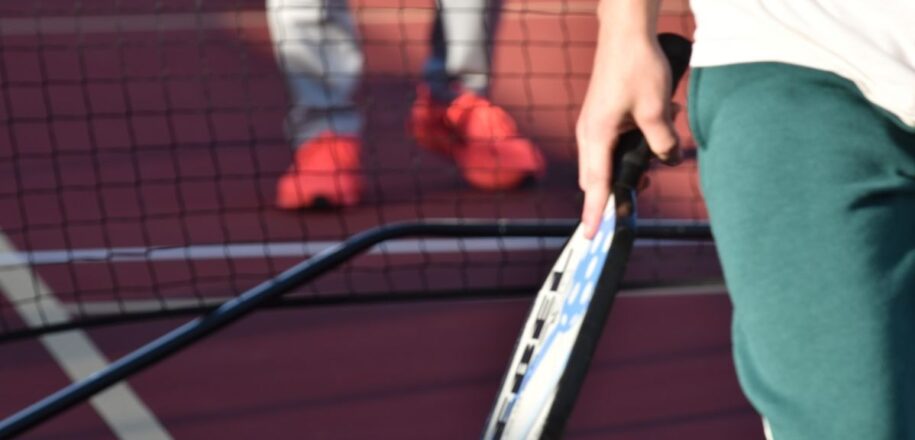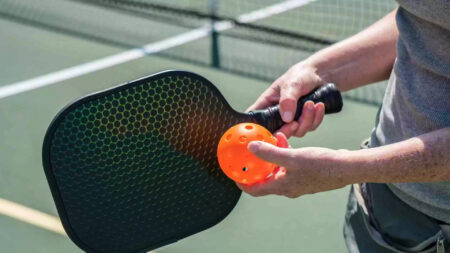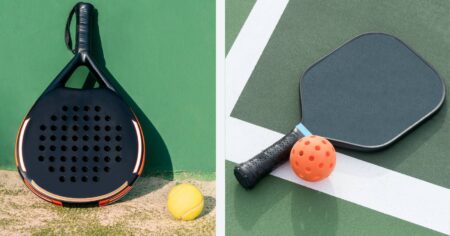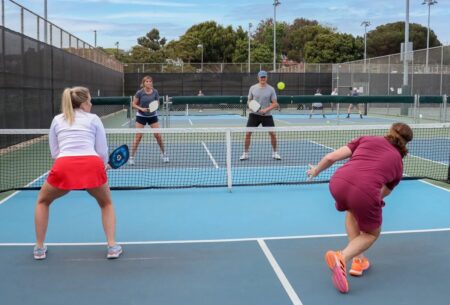
Are you ready to unlock the secrets of the Eastern grip pickleball? If you’re looking to improve your game and dominate the court, then this article is for you. In this comprehensive guide, we will explore the ins and outs of pickleball grips and delve into the Eastern grip technique.
With its unique positioning and grip, the Eastern grip is a game-changer in the world of pickleball. Whether you’re a beginner or an experienced player, learning how to properly execute this grip can give you the edge you need to outplay your opponents.
But what happens when you need to switch grips mid-game? We’ll also provide you with tips and strategies on seamlessly transitioning between different grips to adapt to various game situations.
Overview of Pickleball Grips
When it comes to pickleball, understanding the various grips is essential for improving your game.
The three most common grips are the continental grip, the eastern grip, and the western grip.
Let’s start with the continental grip. This grip involves placing the base knuckle of your index finger on the third bevel of the pickleball paddle handle. It is a versatile grip that allows for a wide range of shots and provides good control. However, it may take some time to get used to, especially if you are accustomed to other grips.
Next up is the eastern grip. With this grip, you place the base knuckle of your index finger on the second bevel of the paddle handle. The eastern grip is popular among beginners as it is easy to learn and provides a solid foundation for different shots. It offers a good balance between power and control, making it a reliable choice for players of all skill levels.
Lastly, we have the western grip. This grip involves placing the base knuckle of your index finger on the first bevel of the paddle handle. The western grip is known for generating power, particularly for shots like the topspin. However, it may sacrifice some control, making it more suitable for players who prioritize power over precision.
Eastern Grip Pickleball
Improve your game and take your skills to the next level by mastering the Eastern grip in pickleball. This essential technique will allow you to dominate the court with unmatched precision and power.
The Eastern grip differs from the Continental grip, which is often used by beginners, in the way the paddle is held. With the Eastern grip, you hold the paddle with your index knuckle on the third bevel, creating a more neutral grip compared to the Continental grip.
Using the Eastern grip in pickleball offers several advantages over other grips. Firstly, it allows for better topspin on your shots. The neutral grip of the Eastern grip allows you to generate more spin on the ball, making it more difficult for your opponents to return your shots.
Secondly, the Eastern grip is ideal for forehand shots. It provides a stable and controlled grip, allowing for accurate and powerful forehand shots.
Lastly, the Eastern grip is particularly effective when attacking and hitting drives. Its neutral grip allows for a quick transition from defense to offense, enabling you to attack the ball with speed and power.
To use the Eastern grip, start by placing your index knuckle on the third bevel of the paddle handle. Wrap your fingers around the handle and ensure a firm but comfortable grip. Practice using this grip during drills and matches to become more comfortable and proficient.
Switching Grips
Switching between different grips can revolutionize your pickleball game, unleashing a whole new level of versatility and unpredictability on the court. By mastering the art of switching grips during a match, you can keep your opponents guessing and gain a strategic advantage.
There are several advantages to switching grips, including improved shot selection, enhanced power, and increased control.
One of the main advantages of switching grips is that it allows you to have a wider range of shot options. Different grips lend themselves to different types of shots, such as the forehand, backhand, and volley. By switching between grips, you can adapt to any situation and hit a variety of shots with ease. This versatility makes it harder for your opponents to anticipate your next move and gives you the upper hand in rallies.
Switching grips also enables you to generate more power on your shots. For example, by using an eastern grip, you can generate more topspin on your forehand shots, giving them more speed and bounce. On the other hand, an eastern backhand grip allows you to hit powerful and accurate backhand shots. By switching between these grips, you can surprise your opponents with added power and make it more challenging for them to return your shots.
In addition to shot selection and power, switching grips can also improve your control over the ball. Each grip has its own unique feel and allows you to make subtle adjustments to your strokes. By switching between grips, you can fine-tune your shots and place the ball exactly where you want it. This level of precision can be a game-changer, as it allows you to exploit your opponent’s weaknesses and find their blind spots on the court.
Conclusion
So there you have it, you’ve now unlocked the secrets of the eastern grip in pickleball. By understanding the different grips and how to switch between them, you can improve your game and gain an advantage over your opponents. Remember to practice and experiment with different grips to find what works best for you. With time and dedication, you’ll be able to master the eastern grip and take your pickleball skills to the next level.
Frequently Asked Questions
What are the benefits of using the Eastern grip in pickleball?
The benefits of using the eastern grip in pickleball are increased control, power, and spin. It allows you to hit shots with more precision and generate more speed on your shots.
Can the Eastern grip be used for all types of shots in pickleball?
Yes, the eastern grip can be used for all types of shots in pickleball. It allows for better control and power, making it suitable for both groundstrokes and volleys.
Are there any disadvantages or limitations to using the Eastern grip?
Using the eastern grip in pickleball has its disadvantages and limitations. It may limit your ability to hit certain shots, such as topspin or slice. It also requires more wrist strength and flexibility.
How long does it take to learn and master the Eastern grip in pickleball?
It may take some time and practice to learn and master the eastern grip in pickleball. However, with dedication and consistent training, you can become proficient in using this grip to enhance your gameplay.
Are there any specific drills or exercises that can help improve the Eastern grip technique in pickleball?
To improve your eastern grip technique in pickleball, try these drills and exercises. Practice your grip by repeatedly gripping and releasing the paddle. Also, work on your wrist flexibility and strength with exercises like wrist curls and wrist rotations.





